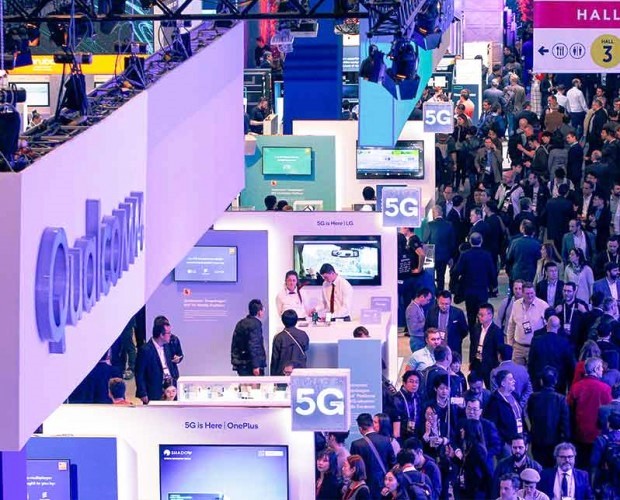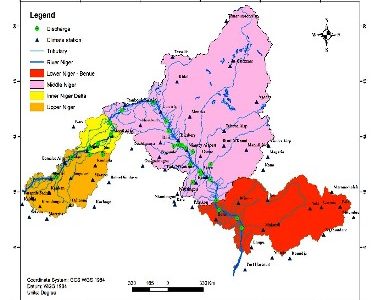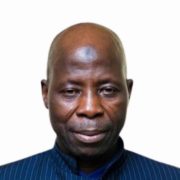John Strand, Strand Consult, says 5G, OpenRAN, AI, Cloud, IoT, Green, and Diversity aamong others will dominate the conversations at Mobile World Congress 2022 begining today in Barcelona, Spain.
Recall that 2019 MWC had some 110,000 participants and 2400 exhibitors. It’s come a long way from its start 36 years ago in Cannes, cozy enough that attendees to mingle at the Hotel Majestic’s bar following each day’s events.
Like the process for MWC, many people have been returning to normal after Covid. However the world has been gripped by the invasion of Ukraine by Russia, an absurd act against a sovereign, democratic nation which became independent in August 1991. Most democratic countries are united against Russia’s action. GSMA canceled the event’s Russian Pavilion and barred some Russian firms per international sanctions. Consider how Telenor stood up to dictatorship in Myanmar: by selling their assets and leaving the country. Pressure could grow for GSMA to suspend its Russian members.
RELATED 2021 Predictions For The Mobile Telecom Industry From Strand Consult
Covid-19 has had a big impact on how people use mobile telecom services as well as the over-top players like Google, Facebook, Amazon, Apple etc. Historically GSMA kept a low profile on political matters. However that is increasingly difficult in a connected world when people communicate globally and have expectations of their service providers. Mobile operators and trade organizations like GSMA no longer have the luxury to focus solely on short-term profit and remain passive to aggression and autocracy.
MWC Buzzwords: 5G, OpenRAN, AI, Cloud, IoT, Green, and Diversity
GSMA Director General Mats Granryd will open the conference, and it’s natural that this Swede would look to create consensus among 750 mobile operator members. He has a tough job to tell regulators that the industry needs better conditions while defending his members’ request for subsidies among other industries which have fared far worse than mobile telecommunications. As usual, he will focus on the latest hype and avoid the uncomfortable, which is too bad for journalists who want answers to critical questions.
Granryd will probably make the point that 5G is growing quickly: over 200 5G mobile networks based on 3GPP standards have now been launched around the world. If 4G was about the smartphone app economy, 5G is about disrupting the wireline home broadband market and opportunities for industry to integrate people and machines intelligently. There are hundreds of millions of new 5G customers. It’s an impressive accomplishment, but it’s doubtful that this can be turned into greater revenue for mobile operators’ shareholders. To date, the money has flowed to Big Tech.
Granryd will also tout the greening of the industry, though careful not to point out that the total energy footprint of the industry is growing. More traffic, devices, connections, network sites, and applications means more energy use. Not all of this is green and much is “greenwashing.”
The other hot topic is diversity, which has been moved from the last day of the conference to the first. The new Diversity4Tech replaces what was Women4Tech, an effort ended prematurely without success. Indeed, half of the world’s mobile subscribers are women, but there are still too few female executives in the mobile industry. Only 3 of GSMA’s 26 board members are women. It’s embarrassing that GSMA has not performed better on this metric. The only woman in the mobile leader line up is President & CEO of Telia Allison Kirkby who speaks on the New Tech Order. Tellingly, the session features three Chinese men: Yang Jie, Chairman, China Mobile; Ruiwen Ke, Chairman & CEO, China Telecom; and LieHong Liu, Chairman & CEO, China Unicom. Diversity, equity, and inclusion (DEI) are unlikely to be themes in the remarks of China’s state-owned operators. Moreover, they are unlikely to mention state-sponsored cyberattacks which are growing more frequent, more sophisticated, and more severe.
Oddly enough this MCW features a keynote by FC Barcelona President Joan Laporta. The program text boasts that the European football market is worth over $25 billion dollars and growing. In reality, football (soccer) is not an industry that mobile operators should emulate. Not only is FC Barcelona $1.57 billion in debt, it had to let Lionel Messi go because it couldn’t honor its financial contract. More largely, the salaries for superstars like Messi, Ronaldo and, others are breaking the cable industry. GSMA is probably thanking its lucky stars that it didn’t feature Chelsea FC owner Roman Abramovich, a Russian oligarch and Friend of Putin who invested in the UK’s Truphone in 2006.
In any event, Ukraine is a communication game changer. Look at Germany’s Chancellor Olaf Scholz now committing to pay the full freight of NATO dues, something that Merkel refused do to.
Regulation, the never-ending story
MWC should be the opportunity for mobile operators take a victory lap. The mobile telecom industry salvaged society from the pandemic, allowing people to work, learn and receive health care from home. Moreover, many operators have commendable plans to be carbon neutral in the near future. Yet GSMA has failed utterly to build on mobile operators’ good citizenship to modernize regulation and kick start much-needed consolidation. Instead many authorities want to double-down on failed regulatory policies like net neutrality and are even-more entrenched against mergers. GSMA lacks a coherent strategy of policy and communication to convince competition authorities and regulators to adopt a modern framework for consolidation, investment, and innovation.
Strand Consult has studied mobile industry consolidation globally for more than 20 years and just published the definitive report on 4 to 3 mobile mergers. It describes why European operators don’t pass the acid test on consolidation and why they fail to succeed.
Strand Consult has published hundreds of research notes, reports, and articles about net neutrality around the world. Notably the leading countries for 5G; Japan, South Korea, China, and USA have no net neutrality rules, or only soft rules. It is no surprise that European countries were late to 5G. Strand Consult has documented how the Body of European Regulators (BEREC) has consistently prioritized the needs of a small cadre of so-called “civil society” advocates over Europeans as whole who want more mobile telecom innovation and investment.
More largely, the measures taken by the European Union to “tame” Big Tech have had the opposite effect. Since Margrethe Vestager became Competition Commissioner in November 2017, Big Tech companies have increased their turnover, market share and earnings.
GSMA promotes Clouds
Where GSMA fails to communicate the value proposition of mobile operators and demand the needed regulatory update, it does a great job to promote cloud providers. Once again, mobile operators are set up to be the biggest losers while Big Tech firms Google, Apple, Amazon, and Microsoft are poised take the lion’s share of the 5G profits of connectivity, just as they did with 4G.
Few understand what AWS means for Amazon. AWS controls about a third of the global cloud market, substantially more its closest competitors Microsoft Azure and Google Cloud. In Q4 FY 2021 AWS generated net sales of $17.8 billion and operating income of $5.3 billion. Net sales grew 39.5% while operating income rose 48.5% compared to the year ago quarter. The value continues to increase as cloud services are integrated with artificial intelligence (AI) and other services.
Here are some critical questions to help you navigate the “cloudnet” sessions
- Why are clouds, which are fundamental to the running of 5G and 5G services, not subject to regulation, like mobile operators?
- Why do regulators obsess about market power of mobile operators while being oblivious to cloud providers Google, Microsoft, Amazon, and increasingly Huawei?
- What has been governments’ strategic blunder in the focus of restricting Huawei in 5G? (Hint: They forget about Huawei in the cloud. See Strand Consult’s note.
- How easy or difficult is it for customers to migrate from one cloud to another? Is data portable from Amazons AWS to Microsoft´s Azure?
3G, 4G, 5G: Where does the cash flow?
At MWC, there is always discussion about the next generation or G. However there is little discussion of the cash flow. Here are the cold, hard facts to consider.
- Many mobile operators believed in 2000 that 3G would be a gold mine for their revenues. They spent billions of euros on spectrum, but the revenue projections that ARPU will grow from to €36 to €72 per month fell far below expectation, ARPU declined.
- There are very few examples of successful partnerships that mobile operators have realized under 3G and 4G. In general, the revenue has flowed to the OTT or third-party providers, not operators.
- The value created in 4G has flowed to Google’s and Apple’s app stores which take a significant revenue cut of the apps on offer.
- Over the years, operators have attempted to launch various application programming interfaces (APIs) that third parties could integrate into their services. Some of these actions have been successful, like premium SMS. From 1998 onwards, mobile operators have been successful to offer premium SMS to pay for various digital services. Strand Consult was the first to publish research on this market and business models. Many of the world’s mobile operators followed our recommendations when it came to how to implement and operate a market with a short code where mobile customers could use to pay for services. See Strand Consult’s old report and research note about premium SMS
- Later around 2009 at MWC, GSMA launched OneAPI, about which we published a lot of research. Unfortunately, the operators did not know how to operate this market and create an ecosystem. Look at the research note ”One API is good news”. While this was a welcome development at the time, it did not develop into a revenue stream.
- Since that time, operators have been transformed into “dumb pipes”, mainly generating revenue from traffic they sell, not by adding value with better or different services. Mobile operators have little to no ability to monetize their own value-added services. In fact WhatsApp has cannibalized mobile operators’ SMS revenue. For example from 2012 to 2013, KPN´s SMS revenue declined by €100 million as customers switched to WhatsApp for messaging.
- There is only limited experience to reference for mobile operators’ 5G partnerships. The current version of 5G is 3GPP release 14 and 15 which do not have a functionality that is more advanced than 4G. Mobile operators have a dream to make money from 5G in the same way they dreamed it for 3G and 4G.
- Moreover, the EU regulatory environment with hard net neutrality rules and BEREC’s draconian over-interpretation of the rules have created an environment which discourages, if not prohibits, partnerships for mobile operators in 5G. It is not surprising that telecom investment has languished for years in EU.
- At MWC there are likely many PowerPoint presentations which describe proposed partnerships between mobile operators and other technology providers. However the business models are not in place, and many mobile operators have an unrealistic view of their ability to monetize value-added services.
- The reality is that to innovate in 5G, firms like Apple and Google, only need to add a new layer on their existing business. They are a proven partner. However mobile operators are required to do the essential retooling of networks. Mobile operators thus have a higher bar for 5G. They have to build an new ecosystem to convince a partner to join, where as Apple, Google and AWS only need, to extend their ecosystem with 5G services.
The role of mobile operators in the value chain has been decimated in the last two decades. It is not a question how mobile operators will react to 5G, but whether they have the skills at all to execute.
OpenRAN and Vendor Diversity – What does that mean?
The latest MWC hype is OpenRAN and the invented term “vendor diversity”. Much of the hype is driven by OpenRAN players which claim that the market for mobile infrastructure equipment is controlled by Huawei, Ericsson, Nokia and ZTE. However, MWC features some 2000 exhibitors which supply infrastructure equipment to over 750 mobile operators. Note that the need for “vendor diversity” is not addressed with cloud providers.
Many OpenRAN pronouncements sound too good to be true, for example a technology that can reduce mobile operators infrastructure CAPEX and OPEX by 30-40 percent. Investors and other decision makers want objective information about the latest mobile industry hype. Strand Consult’s free report Debunking 25 Myths of OpenRAN examines the claims made by OpenRAN proponents. Strand Consult, having witnessed the launch of WiMax, OneAPI, and the iPhone among other hyped technologies promised to bring windfall revenues to mobile operators, provides critical questions to evaluate OpenRAN in its latest report.
The main challenge for OpenRAN is whether it can be relevant for operators which have very little room for margin of error. OpenRAN is far from being able to replace classic infrastructure on a 1:1 basis.
OpenRAN testing has been launched in a world in which mobile operators buy and build classic RAN at a high rate. There are two reference cases. One is Rakuten in Japan driven by charismatic CEO Tareq Amin. Rakukten gives away free traffic without getting paying customers into the store. It’s solution is proprietary, not open.
The US-based Dish is the second. It faces many challenges which make it hard to see how it can become a serious alternative to Verizon, AT&T and T-Mobile
The Federal Communication Commission (FCC) proceeding on OpenRAN showed few, if any examples, of US mobile operators and their trade associations (CTIA, Rural Wireless Association, and Competitive Carriers Association) testifying that OpenRAN is a serious alternative to classic RAN installations.
MWC offers an opportunity to meeting mobile operators’ Chief Technology Officers. Ask them what they think of OpenRAN why they have launched 5G using classic RAN based on 3GPP standards.
The history of OpenRAN is reminiscent of WiMax. If you have some of the PowerPoints from the early 2000s, you will see how infrastructure vendors talked about why WiMax was so amazing. These points are almost identical to what is asserted about OpenRAN.
To assess claims about vendor diversity, it’s important to look at facts and history. The infrastructure supplier market has consolidated from 20 top tier providers in the 2G market in 1989 to 12 top tier providers in 1999 to 5 top tier providers in 2019. Many of the first-generation enthusiasts did not make it out of the 1G analogue cellular world into the world of 2G digital cellular. Over time the GSM standards family (GSM, WCDMA, LTE etc.) became the de facto basis for the roadmap, the standard for global economies of scale and the industry benefits such as lower unit costs. Those equipment suppliers which focused on CDMA and analog exited the market.
There is also the practical issue of math. The notion of vendor diversity for its own sake challenges operators to reduce complexity and cost in their networks. Operators frequently reduce the number of vendors to improve security (ability to vet vendors and develop trusted relationships) and to lower cost (ability to secure volume discounts). Indeed operators want concentration in part to get better value for money.
Note how Neil McRae, Managing Director and Chief Architect at British Telecom described when he got the question; “The major operators have been telling their shareholders since 2000 that they should reduce suppliers to save money?”. He replied, I have worked with BT for 10 years. When I arrived, BT had a 21 C fixed network with 50 vendors. I reduced it to 4 vendors and saved BT £1 billion in 3 years. The key was reducing complexity, which is the killer in telecommunications. When I hear about Open architectures with 5- 50 vendors, I run for the hills. Reducing vendors was the right thing to do and we would do it again.” RAN, while important, is just one part of an operator’s infrastructure requirements.
Moreover, the consolidation of European infrastructure is the result of many European operators having opted into Huawei and opted out of European suppliers.
The active customer base of Europe’s 102 mobile operators is 673 million subscribers. Huawei’s and ZTE’s share of 4G RAN mobile networks are 44% and 4% respectively, total 48%.This means that 325 million European mobile customers access Chinese infrastructure, primarily from Huawei. Countries are divided into four categories of share of 4G RAN equipment from Chinese suppliers: 75-100%; 50-75%; 25-50%; and less than 25%.In its RAN report Strand Consult has mapped the market for 4G RAN in Europe.
More than 40% of the CAPEX that European operators have used every year for the last 10 years has been shipped to China and Chinese suppliers like Huawei and ZTE. If you look at the American operators, most of their CAPEX has gone to European suppliers Nokia and Ericsson. We thought that the EU should thank the US operators and the US government for their massive support for European manufacturers and for their fight against the use of Chinese equipment from Huawei and ZTE. The five operators Vodafone, TIM, Telefonica, Orange and Deutsche Telekom have for several years opted for Chinese manufacturers at the expense of European vendors. 62% of Vodafone´s 4G RAN in Europe are from Huawei.
The fact is that RAN Capex makes up less than 3 percent of a mobile operator’s ARPU. The global RAN market is today $29 billion and can be pitted against Verizon’s Capex which amounts to $18 billion.
The bottom line for MWC
Strand Consult has limited expectation for mobile operators’ profitability in 5G. Operators may have ambitions, but the question is whether they have the skills to build an ecosystem that can compete with Apple, Google, and AWS. However, operators can do better on the policy front to modernize regulation and promote consolidation.
Under the current frameworks, there is little to no upside for operators. Mobile operators must consolidate to cut cost and increase profitability. They will probably continue to sell off infrastructure. They continually become dumb pipes. There’s nothing wrong with being a dumb pipe; it’s a business model that works quite fine in water and energy. But don’t expect it to be innovative.
In practice, this development means that many functions from telecom regulators have become irrelevant. The primary task of the telecom regulator of the future will be to deal with spectrum.
Technology companies build services on top of US and Chinese platforms. Many of the smaller technology companies are driven by the construction of a business with the aim of being acquired by these tech companies. A good example is Facebook’s purchase of WhatsApp for $16 billion in February 2014.
There will be many interesting discussions on 5G, OpenRAN, IOT and AI, including the need for more security and transparency. In any event, MWC is always a party because of the cool people who attend giving food for thought to those who want to be stimulated intellectually. Moreover Barcelona’s bars and restaurants rarely disappoint.
Strand Consult provides both pre and post review of the Mobile World Congress. Read reviews from the past years.
Meet Strand Consult at the Mobile World Congress.
If you would like to meet with Strand Consult during the MWC, please email your contact details and the details/purpose of the meeting, and we will get back to you. Journalists are most welcome!































